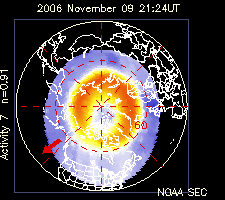Radiowave Propagation in the Medium and High Frequency Spectrum
Definitions
Radiowave propagation
Medium Frequency 300-3,000kHz (300kHz-3MHz)
High Frequency 3,000-30,000kHz (3MHz-30MHz)
Ground Waves
TX
RX
Direct wave
Reflected Wave
Ground Figure 1 The Situation at VHF
But at HF
The last term is the surface wave.
Ground Wave = Direct Wave + Reflected Wave + Surface Wave
At MF and in the lower HF bands, aerials tend to be close to the ground (in terms of wavelength). Hence the direct wave and reflected wave tend to cancel each other out (there is a 180 degree phase shift on reflection). This means that only the surface wave remains.
So what is a surface wave? It’s a wave that travels along the surface of the earth by virtue of inducing currents in the earth. The imperfectly conducting earth leads to some of its characteristics. Its range depends upon:
Frequency
Polarisation
Location
Vertical line represents wavefrontGround conductivity.
Vertical line represents wavefront Figure 2 Surface Waves Tilt
So the surface wave dies more quickly as the frequency increases. Conversely at very low frequencies, the tilt angle can equal the curvature of the earth and the surface wave will travel for very long distances indeed.
The range for surface waves is approximately described by:
Frequency (MHz) Range(Miles)
1.8--------------------- 93
3.5 ---------------------67
7 -----------------------47
14 --------------------- 33
21 --------------------- 27
28 ---------------------23'
This table is for vertically polarised surface waves. Horizontally polarised surface waves are heavily attenuated and don’t go far at all. The table is just a rough idea. What you will achieve depends upon your system.


0 Comments:
Post a Comment
<< Home